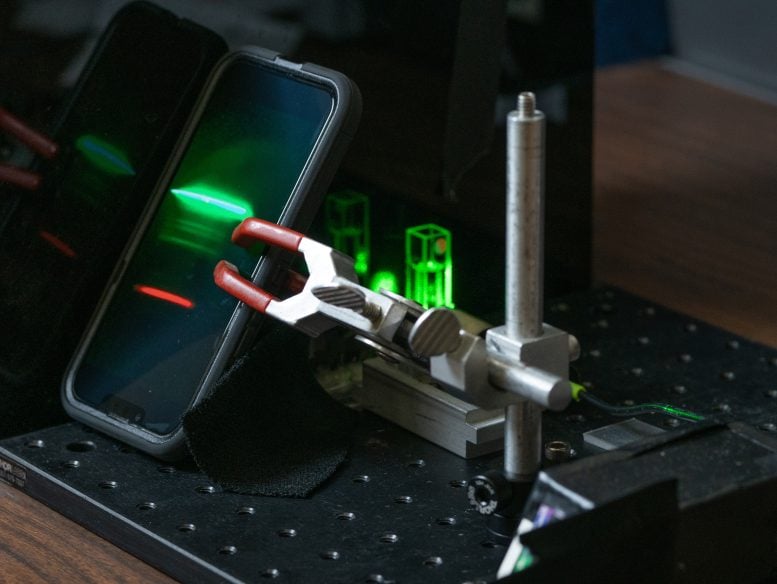
The affordable, cellphone-based Raman spectrometer system can identify unknown biological molecules in just minutes.
A new handheld Raman spectrometer system, patented by Dr. Peter Rentzepis at Texas A&M University, allows for the non-invasive identification of harmful chemicals and materials using a combination of a cellphone camera and laser technology. This device, which is significantly cheaper and faster than traditional spectrometers, can be used in remote areas for rapid on-site analysis.
Imagine being able to identify safe berries or mushrooms while hiking, or swiftly detecting pathogens in a hospital setting that would usually take days to diagnose.
Identification and detection of drugs, chemicals, and biological molecules invisible to the human eye can be made possible through the combined technology of a cellphone camera and a Raman spectrometer — a powerful laser chemical analysis method.
Dr. Peter Rentzepis, a professor in the Department of Electrical and Computer Engineering at Texas A&M University, holds a patent for a hand-held cellphone-based Raman spectrometer system. Rentzepis’ invention allows the user to make non-invasive identifications of potentially harmful chemicals or materials in the field, especially in remote areas where laboratory spectrometers cannot be used due to their size and power needs.
This new Raman spectrometer system integrates lenses, a diode laser, and a diffraction grating — a small thin square-shaped surface that scatters light for analysis — in combination with a camera from a cellphone to record the Raman spectrum. Peaks in the spectrum provide detailed data about the chemical composition and molecular structure of a substance, depending on their intensities and positions.
How the Device Works
To use the device, a cellphone is placed behind the transmission grating with the camera facing the grating, ready to record the Raman spectrum. A laser shoots a beam into a sample of unknown material, such as a bacterium, on a slide. The camera records the spectrum, and when paired with an appropriate cellphone application/database, this handheld instrument can enable rapid materials identification on site.
Previously, the process of identifying unknown substances involved extensive sampling of biological material and laboratory analysis, which could take several hours or even days. While traditional Raman spectrometers cost up to thousands of dollars, Rentzepis’ invention can be made at a significantly lower cost and can identify materials at a significantly quicker speed.
Cost and Practicality
“It’s a small device that can tell you the composition of a particular system, material, or sample,” Rentzepis said. “You can even have it in your pocket.”
Fellow inventors are former Texas A&M graduate students Dr. Dinesh Dhankhar, a system engineer at Thermo Fisher Scientific, and Anushka Nagpal, a process engineer at Intel Corporation.
Funding for this research is administered by the Texas A&M Engineering Experiment Station (TEES), the official research agency for Texas A&M Engineering.